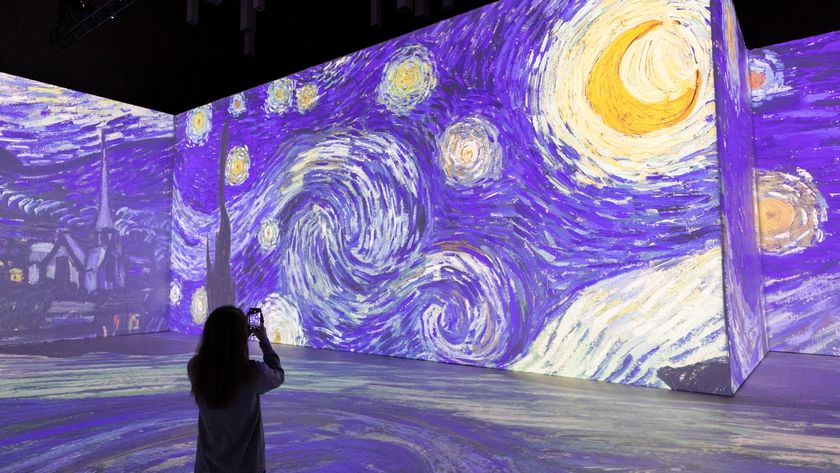
We've Delivered our Citizen Kane, Now Give Gaming an Oscars Ceremony (Op-Ed)

This article was originally published at The Conversation. The publication contributed the article to Live Science's Expert Voices: Op-Ed & Insights.
Hollywood’s most celebrated actors, actresses and directors are, by now, finalising their outfits and having their manicures in preparation for the impending Oscars ceremony on 2 March. It’s considerably quieter over in the games industry.
Games do of course have their own festivals. The British Academy Games Awards, which will be held on 12 March, are perhaps the most high profile but even these attract limited coverage in comparison to the BAFTAs and are eclipsed by the Oscars and literary awards such as the Man Booker prize. And for the rest of the year, the mainstream media continues to devalue games while filling column inches with serious reviews of theatre, opera and film.
The Oscars provides legitimacy for all different types of film, from blockbuster action to documentaries to foreign productions. It brings the artistic value of film into the mainstream – a job that really needs to be done for games.
This attitude might have been more appropriate when games were very much a niche interest but the sheer scale of the industry these days legitimates it as a popular cultural form. In 2014 the total value of the global videogaming industry will outstrip Hollywood, and not for the first time. Revenues are projected to grow to close to $90 billion by 2017 and the culture is now practically ubiquitous, with nearly 60% of American households and around 40% of 16-49 year olds in the UK playing games.
But are games art? The absence of their presence in the mainstream media would suggest not. Part of the explanation for this absence may simply be that a large number of the over 40s who dominate the media don’t play. They also lack obvious icons, which are central in theatre, literature or film, and can be seen as trivial.
But as long ago as 1993, the French scholars Alain and Frédéric Le Diberder identified games as the tenth great art form and the growing academic legitimacy of videogames also suggests they are worthy of consideration as art. But the university courses that do exist still tend to place an emphasis on design, programming and animation and not on interrogating the artistic and critical value of games. This is striking in comparison to theatre studies, literature, film or music studies, all of which have their artistic value cemented within university programmes specifically designed to interrogate them critically.
Sign up for the Live Science daily newsletter now
Get the world’s most fascinating discoveries delivered straight to your inbox.
But is it art?
So universities and the media – two important players in defining what makes art – have failed to keep pace with the rapid changes in videogaming. What they don’t appear to realise is that games now offer rich stories and evocative aesthetic experiences.
Historically it has been said that gaming would not make its cultural mark until it could deliver its own Citizen Kane – a game that would make you cry. Well, many would argue that this has already happened, and still the recognition has not arrived.
The Heavy Rain trailer
Heavy Rain, a film-noir style game about a series of murders, was released in 2010 and enjoyed mainstream commercial success. It opened up questions about interactive storytelling by explicitly asking players “how far will you go to save someone you love?”
Games such as the Walking Dead show a powerful bond between protagonists and Sony’s own The Last of Us similarly uses an apocalyptic scenario to develop a powerful narrative based on the bond between gruff survivalist Joel and a young girl, drawing parallels with Cormac McCarthy’s The Road.
The speed of these developments is striking. In 2013, Papers Please used gameplay to bring emotional connection to decisions about whether or not the player in their role as an immigration official should allow entry of immigrants and asylum seekers.
Gone Home, released last year, provided an evocative space for the exploration of a teenager’s struggles and transition towards adulthood and The Stanley Parable allowed for powerful reflection on morality, ethics and choice.
Games have also begun to use aesthetic in extremely powerful and moving ways. Journey, for example, provides a beautiful landscape and allows the player to pair up on line with an anonymous partner to explore together. The effect is totally arresting.
Then, on the political front, acknowledging games as art becomes part of the UK debate about whether the industry should receive tax breaks. Many would argue that it should, given the increasingly important place of digital creativity in the economy.
The debate about whether games are art is crucial in limiting the desires by some politicians to provide excessive regulation of violent content, particularly in the US. Politically, we are often far more tolerant of violence in films, for example, because it is used for expressive purposes.
Cumulatively, the symbolic absence of an Oscars for games has political and social consequences as well as failing to acknowledge the importance of a medium that tells powerful stories and evokes strong emotion in its narratives and gameplay. As they vacuum the red carpet for the movie stars, it’s time for the Academy to start making room for this very modern form of art.
Nick Robinson receives funding from the Swedish Research Council.
This article was originally published on The Conversation. Read the original article. The views expressed are those of the author and do not necessarily reflect the views of the publisher. This version of the article was originally published on Live Science.












